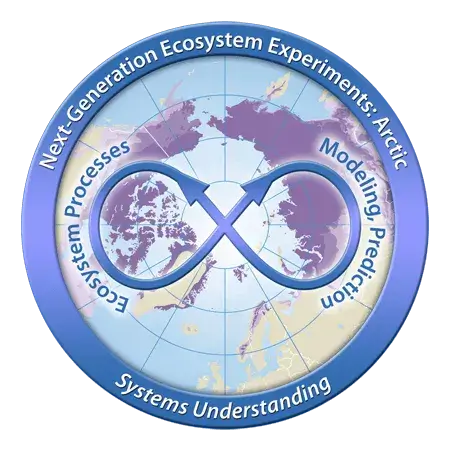Yazbeck, Theresia, et al. “Shrub Expansion Can Counteract Carbon Losses From Warming Tundra”. Journal of Geophysical Research: Biogeosciences , vol. 130, 2025, https://doi.org/10.1029/2024JG008721.
Publications
Displaying 21 - 40 of 58
By year of publication, then alphabetical by title
- Lathrop, Emma, et al. “Shrubs Strongly Influence Snow Properties in Two Subarctic Watersheds”. Permafrost and Periglacial Processes, 2025, https://doi.org/10.1002/ppp.2263.
- Freitas, Nancy L., et al. “Substantial and Overlooked Greenhouse Gas Emissions from Deep Arctic Lake Sediment”. Nature Geoscience, vol. 18, 2025, https://doi.org/10.1038/s41561-024-01614-y.
- Thoman, Richard L. “The Arctic”. Bulletin of the American Meteorological Society, vol. 106, 2025, https://doi.org/10.1175/BAMS-D-25-0104.1.
- Gu, Lianhong, and Bo Gao. “The Ecological Impacts of Dry and Hot Shocks in the Land of Midnight Sun”. Global Change Biology, vol. 31, 2025, https://doi.org/10.1111/gcb.70391.
- Gallois, Elise, et al. “Tundra Vegetation Community, Not Microclimate, Controls Asynchrony of above and Belowground Phenology”. Global Change Biology, vol. 31, no. 4, 2025, https://doi.org/10.1111/gcb.70153.
- Zlotnik, Vitaly A., et al. “A Model of Ice Wedge Polygon Drainage in Changing Arctic Terrain”. Water, vol. 12, no. 12, 2020, p. 3376, https://doi.org/10.3390/w12123376.
- Yang, Dedi, et al. “A Multi-Sensor Unoccupied Aerial System Improves Characterization of Vegetation Composition and Canopy Properties in the Arctic Tundra”. Remote Sensing, vol. 12, no. 16, 2020, p. 2638, https://doi.org/10.3390/rs12162638.
- Bouskill, Nicholas J., et al. “Alaskan Carbon-Climate Feedbacks Will Be Weaker Than Inferred from Short-Term Manipulations”. Nature Communications, vol. 11, 2020, p. 5798, https://doi.org/https://doi.org/10.1038/s41467-020-19574-3.
- Philben, Michael J., et al. “Anaerobic Respiration Pathways and Response to Increased Substrate Availability of Arctic Wetland Soils”. Environmental Science: Processes & Impacts, vol. 22, no. 10, 2020, pp. 2070-83, https://doi.org/10.1039/D0EM00124D.
- Zhu, Qing, et al. “Assessing Impacts of Plant Stoichiometric Traits on Terrestrial Ecosystem Carbon Accumulation Using the E3SM Land Model”. Journal of Advances in Modeling Earth Systems, 2020, https://doi.org/10.1029/2019MS001841.
- Iversen, Colleen M., et al. “Building a Culture of Safety and Trust in Team Science”. Eos, vol. 101, 2020, https://doi.org/10.1029/2020EO143064.
- Coon, Ethan T., et al. “Coupling Surface Flow and Subsurface Flow in Complex Soil Structures Using Mimetic Finite Differences”. Advances in Water Resources, vol. 144, 2020, p. 103701, https://doi.org/10.1016/j.advwatres.2020.103701.
- Euskirchen, Eugénie S., et al. “Co‐producing Knowledge: The Integrated Ecosystem Model for Resource Management in Arctic Alaska”. Frontiers in Ecology and the Environment, vol. 18, no. 1, 2020, pp. 447-55, https://doi.org/10.1002/fee.2176.
- Jafarov, Elchin E., et al. “Estimation of Subsurface Porosities and Thermal Conductivities of Polygonal Tundra by Coupled Inversion of Electrical Resistivity, Temperature, and Moisture Content Data”. The Cryosphere, vol. 14, no. 1, 2020, pp. 77-91, https://doi.org/10.5194/tc-14-77-2020.
- Jan, Ahmad, et al. “Evaluating Integrated Surface Subsurface Permafrost Thermal Hydrology Models in ATS (v0.88) Against Observations from a Polygonal Tundra Site”. Geoscientific Model Development, vol. 13, no. 5, 2020, pp. 2259-76, https://doi.org/10.5194/gmd-13-2259-202010.5194/gmd-13-2259-2020-supplement.
- Abolt, Charles J., et al. “Feedbacks Between Surface Deformation and Permafrost Degradation in Ice Wedge Polygons, Arctic Coastal Plain, Alaska”. Journal of Geophysical Research: Earth Surface, vol. 125, no. 3, 2020, https://doi.org/10.1029/2019jf005349.
- Abolt, Charles J., and Michael H. Young. “High-Resolution Mapping of Spatial Heterogeneity in Ice Wedge Polygon Geomorphology Near Prudhoe Bay, Alaska”. Scientific Data, vol. 7, no. 1, 2020, https://doi.org/10.1038/s41597-020-0423-9.
- Krassovski, Misha B., et al. “Hybrid-Energy Module for Remote Environmental Observations, Instruments, and Communications”. Advances in Polar Science , vol. 31, no. 3, 2020, pp. 156-6, https://doi.org/10.13679/j.advps.2020.0008.
- Chang, Kuang-Yu, et al. “Hysteretic Temperature Sensitivity of Wetland Methane Fluxes Explained by Substrate Availability and Microbial Activity”. Biogeosciences, vol. 17, 2020, pp. 5849-60, https://doi.org/https://doi.org/10.5194/bg-17-5849-2020.

